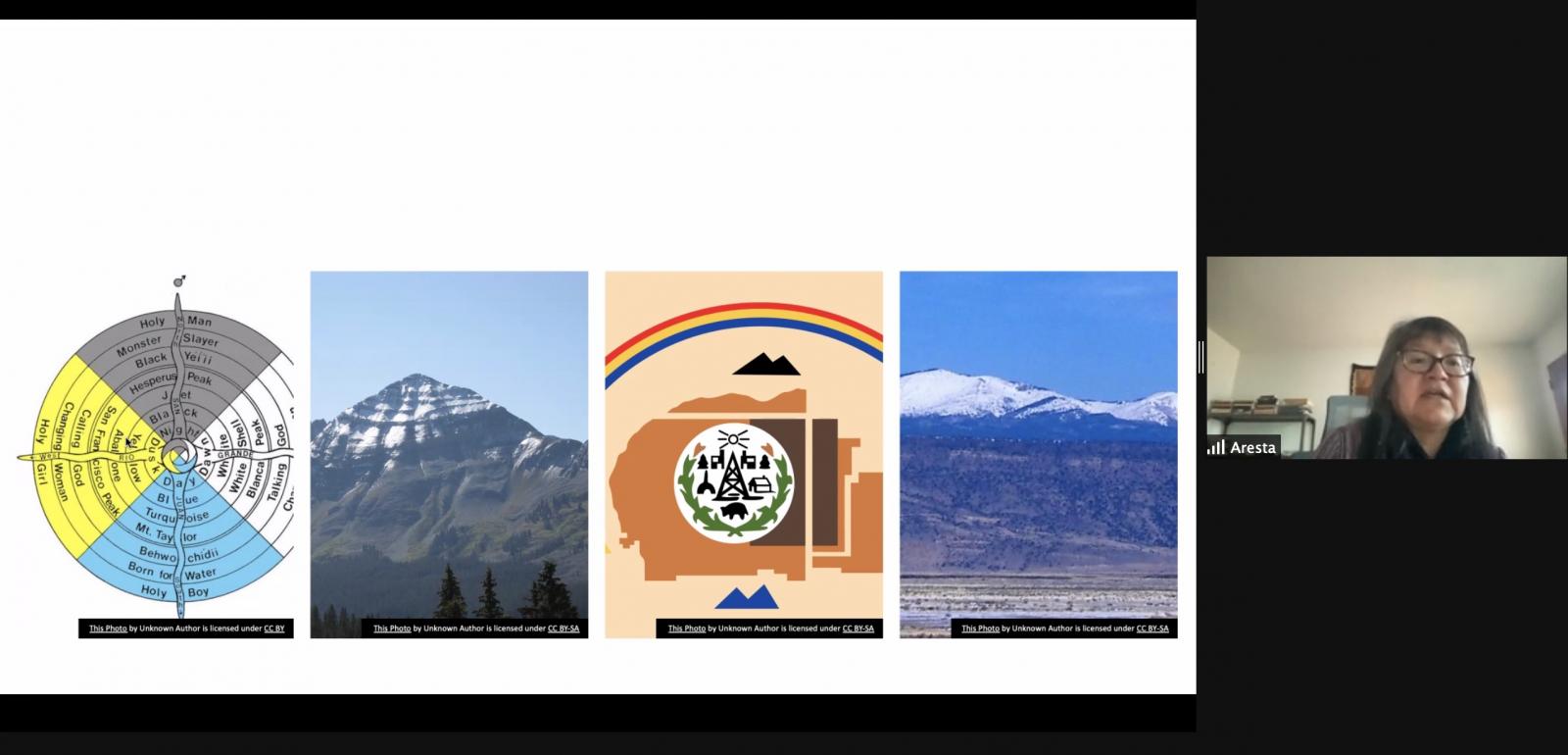

April 7, 2021 Aresta Tsosie-Paddock shared with the AIVAN group her processes of quilt-making, and some guiding traditional values that inform her work as an artist and language teacher. Dr. Tsosie-Paddock is of the Navajo Nation from Sand Springs, Arizona, situated in western Navajo Nation, and her heritage comes from the Water that Flows Together clan, born from the Deer Springs People, as well as the Manygoats People, and the Tower House People. She emphasized the importance of knowing your clan, because they automatically incorporate familial and relational obligations. Oral tradition says the Navajo holy people remain within the four sacred mountains : Mt. Blancoto, Mt Taylor, San Francisco Peaks, and Mt. Hespires. The traditional Navajo motifs often include depictions of these different directions marked by mountains, and the local Rio Grande West and San Juan rivers which are part of the creation story.
Dr.Tsosie-Paddock practices sewing and weaving, carrying on after her master weaver relatives. She has made several different styles of clothing for men and women for ceremonies. She first learned how to make Lakota star quilts (recognizable by their eight points) when an elder from South Dakota asked her for one. Not being Lakota herself, she takes care to learn the process respectfully, and only makes them as gifts, rather than selling them. Whenever she is asked by Native elders to make something, she makes sure to incorporate motifs and techniques that are relevant to that specific person’s tribal culture and background. Her artwork thus brings together a mixture of components from different tribes that she has permission for.
Dr. Tsosie-Paddock also emphasized some key Navajo teachings she grew up with, which continue to guide her. One is the idea of self-sovereignty and self-determination at the personal individual level; that it is up to you to achieve something. Another is the concept of hozho, to be in harmony and balance with our surroundings and within ourselves. She brings this feeling with her to her art, and notes that to make a successful piece of clothing or artwork, she must become a part of the material and foster the right relationship with the material. She only approaches her craftwork when she feels her body and mind are in a good space.
Beyond her artwork, Dr. Tsosie-Paddock is a language teacher. At the meeting she shared her commitment to passing on because speaking Indigenous language is inherently traditional knowledge, in that the values of the culture are embedded into the language. In spite of her family undergoing relocation, and being sent to boarding school as a child, Dr. Tsosie-Paddock affirms that the language and experiences of living in traditional life stays with you forever. Several members of the AIVAN group echoed these sentiments of the value of heritage Indigenous language and cultural values in guiding our lives.
